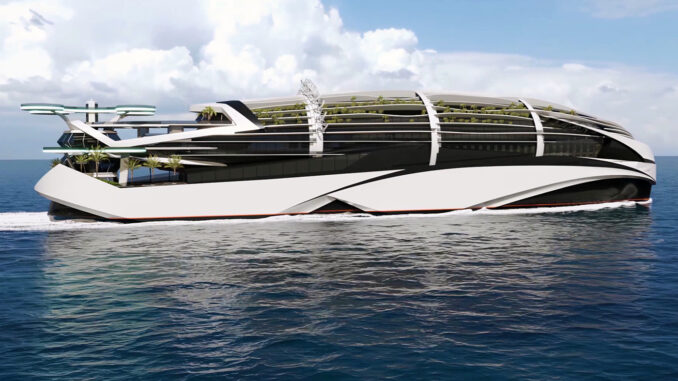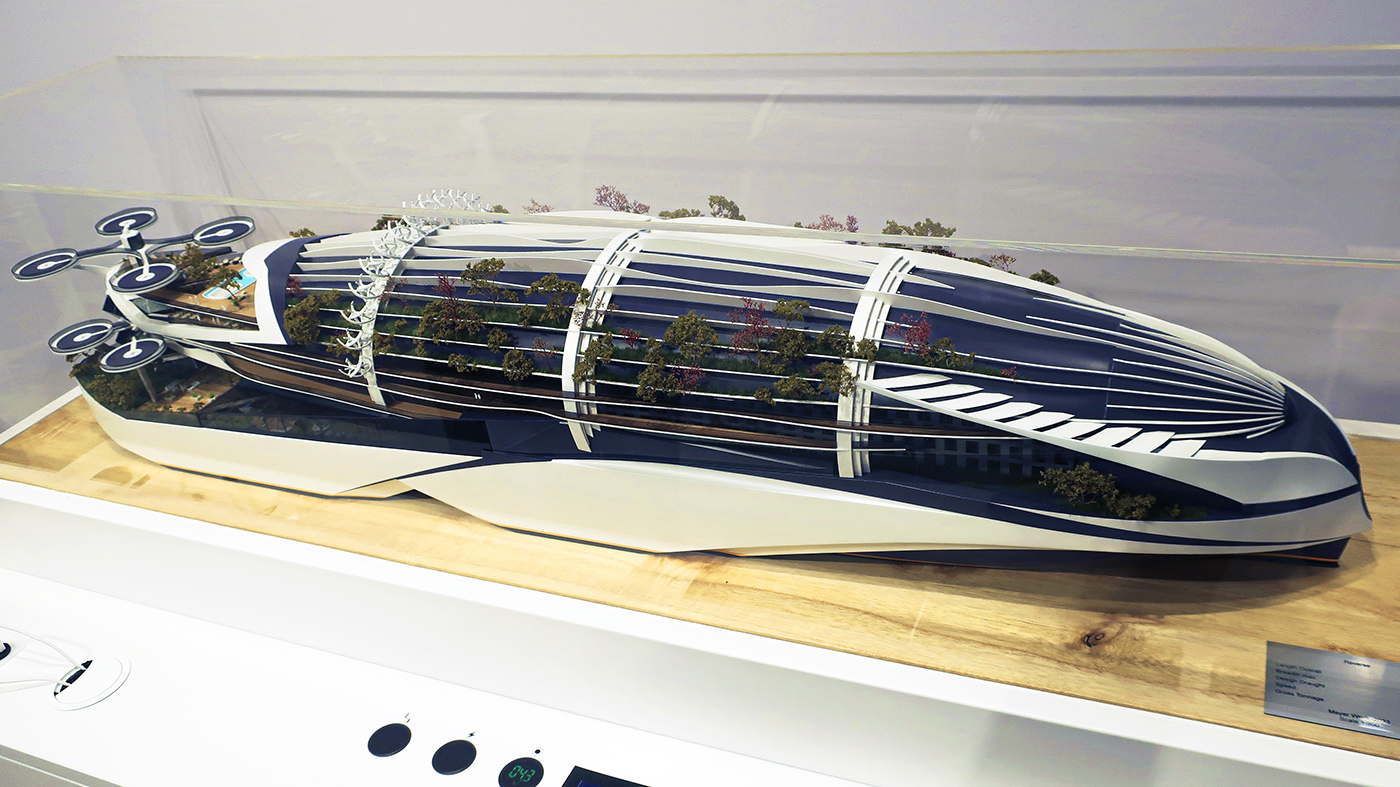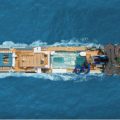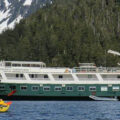
It’s so sleek it cuts effortlessly through waves and headwinds. It’s powered by emission-free fuel cells and wind turbines, while photo cells in its glass produce more than enough juice for all the ship’s electrical needs.
It’s called Reverse, but it’s a look far into the future by engineers at Germany’s Meyer Group working on ideas to create a totally self-sufficient ecologically friendly cruise ship. The model was a show stopper at the Seatrade Cruise Global conference in Fort Lauderdale in March.
The ship’s shape was inspired by the smooth contours of a rock penguin, said Tim Krug, Meyer Group’s head of concept development. The hull is a catamaran design that glides through the water and its glass upper decks are rounded for minimal air resistance. The ship could cruise without fossil fuels using a combination of solar and fuel cells, wind power and horizontal wings on the hull.

The decks would include urban gardening areas to grow food and trees for shade. The upper decks would include drone landing pads that could ferry passengers on and off the ship. And everything could be built and repaired quickly using modular recyclable components.
“The ship is based on global megatrends and is one — but not the only– logical response to them,” Krug explained.
So, when could it become a reality? Well…in reality…how about 2100?
“From today’s point of view, we sometimes come up with extreme approaches, but it is equally important to think them through and develop answers from them,” Krug said.

And it’s not likely the final answer. “For example, we have only provided for small restaurant areas in the ship that serve more as social meeting places, because we imagine that a large part of the nutrients in that era will be consumed in concentrated form, like pills.”
Really? That part is likely to need a rethink.
But some of the innovative technology built into the concept is already showing up on new cruise ships. Meyer’s yard in Turku, Finland is currently building Mein Schiff 7 for TUI Cruises that will be the first to be powered by green methanol, making its power production almost climate neutral.
This summer, Meyer Werft is also delivering Silver Nova, a new class of ship for Silversea Cruises that sets new technology and computer assisted design standards. For the first time at Silversea, Nova-class ships will feature a horizontal layout and innovative asymmetrical design, with public spaces and suites extending the full length of the ship. Thanks to the large expanses of glass, guests will experience an unprecedented openness of the ship to the water and destinations, Silversea boasts.
Meyer Group is also building Icon of the Seas, the largest cruise ship in the world, for Royal Caribbean International that will launch in January, 2024. It will run on liquefied natural gas rather than diesel.
The goal of Meyer’s multi-year research project is to develop a maritime fuel cell system of unprecedented scale that will power Royal Caribbean’s next class of ships. When perfected, the fuel cells are also expected to meet a ship’s entire hotel requirements, Krug noted.





1 Trackback / Pingback
Comments are closed.